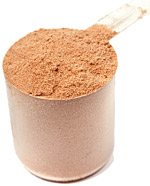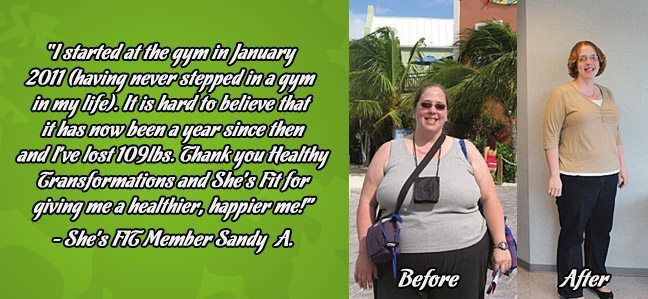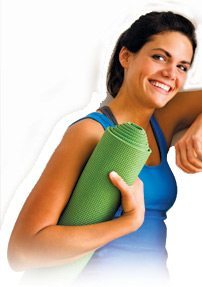


Top Sneakers
With so many options on the shelves, selecting the right shoes can feel like a workout itself.
What’s Your foot type?
Number one mistake: Buying kicks based solely on style or what friends are wearing. Picking the right shoe for your foot type and biomechanics should be your top priority. Most specialty running stores can advise you—they have well-trained staff who can assess your arches and evaluate your pronation (the way your foot moves as you walk and jog). Or try this at-home test: Wet your foot, then step on a paper bag. What shape do you see?
High Arch: You may underpronate (land on the outside of your feet), which can cause too much shock to travel up your legs. Look for a neutral or cushioned shoe.
Normal Arch: You probably have few foot or pronation problems. A neutral shoe is your best bet.
Flat Arch: You likely overpronate (your feet turn inward too much). Try neutral or stability shoes.
Let your most demanding activity dictate your pick. For example, while running shoes can handle the demands of an indoor class or boot-camp session, cross trainers may not translate well out on the roads.
Source: mensfitness.com
High protein diets may lower blood pressure
Swapping out some of your daily carbs for protein could keep your ticker in top form.
 Low carb diets may have fallen by the wayside (or at least, aren’t in the news as often), but new research finds that increasing your protein intake—even by as little as 10 percent—could have some seriously healthy effects on your heart. A recent study found that overweight adults who replaced some of the sugar in their diets with a protein supplement experienced an average 5 point drop in their systolic blood pressure, the top number in a blood pressure reading.
Low carb diets may have fallen by the wayside (or at least, aren’t in the news as often), but new research finds that increasing your protein intake—even by as little as 10 percent—could have some seriously healthy effects on your heart. A recent study found that overweight adults who replaced some of the sugar in their diets with a protein supplement experienced an average 5 point drop in their systolic blood pressure, the top number in a blood pressure reading.
Some of the top lean protein foods for men include low fat Greek yogurt, quinoa, skinless chicken, grass-fed beef and pre-cooked chicken sausage.
Source: mensfitness.com
Ladies’ Corner
5 REASONS MORNING WORKOUTS ROCK
Jump starts your metabolism
Keeping it elevated for hours, sometimes for up to 24 hours!
Energizes you for the day
Not to mention that gratifying feeling of virtue you have knowing you’ve done something disciplined and good for you.
Significantly increases mental acuity
A benefit that lasts four to ten hours after your workout ends. Exercising in the A.M. means you get to harness that brainpower, instead of wasting it while you’re snoozing.
Regulating your body
Your body learns that you do the same thing just about every day, and it begins to prepare for waking and exercise several hours before you actually open your eyes.
Higher quality of sleep
Regular exercise generally means a higher quality of sleep, which in turn means you’ll probably require less sleep.
Source: sparkpeople.com
 Men’s Corner
Men’s Corner
5 TIPS FOR SUMMER RUNNING
Avoid the heat of the day
Run early in the morning or late in the evening. ANd run on the shady side of the street rather than in direct sunlight.
Protect your eyes
Wear sunglasses with UV protection to reduce sun glare.
Stay hydrated
Youc an lose between 175 and 350ml of fluid for every 20 minutes of running. To avoid that, drink adequate fluid 30-45 minutes before running and then a cupful every 10-15 minutes.
Plan your route
So you can take on water at a tap or find drinking fountains.
Know the warning signs
Signs of heat exhaustion include headache, nausea, dizziness, disorientation, decrease in sweating, pale dry skin, blurred vision and loss of muscular control. If you notice any of these, stop running immediately. Get to a shaded, cool area, drink and pour some water over yourself and get assistance.
Source: mensfitnessmagazine.com.au


Starting out small with your workouts
If you have never exercised regularly or haven’t exercised in a long time, it is very important to start your workout routine conservatively. To avoid pain and injury, women should do less than what they think they can for at least the first few workouts. When you are first beginning an exercise routine, it is much more important to avoid injury and build a solid fitness foundation. See your doctor or a trainer for more information on starting a fitness routine appropriate for your level of fitness.
Source: womensfitness.lifetips.com
Spanish pilaf with Chicken
 Ingredients
Ingredients
- 1 tsp garlic
- 1 ¾ oz chicken, broiled
- ¾ cup rice, brown cooked
- 3 Tbls tomato sauce
- 1 cup bell pepper
- ½ medium tomato
- 1 Tbl salsa
- ¼ cup onion
- 1 ½ tsp oil, high oleic safflower
Spices/Flavouring
- ¼ tsp salt, lite
- ¼ tsp black pepper
- ¼ tsp chili powder
Preparation
- In skillet, cook chopped onion, bell pepper, and garlic in oil till tender but not brown.
- Stir in chicken, diced tomato, sauce, rice, chili powder, salsa, black pepper, salt, and 1 cup water. Cover and simmer till rice is tender and most of the liquid is absorbed.
- Serve warm.
- Per serving: 358 calories, 22 g protein, 10 g total fat, 44 g carbohydrates.
Source: Healthy Transformations Recipes
Fitness Myths
Fitness training is full of myths and misconceptions. Most of these pieces of misinformation are well-meant in that they often provide seemingly effective solutions for common fitness/fat loss problems.
Spot reduction
If you see someone performing set after set of ab crunches or hip abductions, you can be fairly certain that they are trying to reduce fat from that particular part of their body. This method of exercise is commonly called spot reduction and the assumption is that doing lots of repetitions and sets for a specific muscle will result in body fat melting away from that area. Sadly this is not the case. It’s better to assume that spot reduction is a myth and that the best way to lose fat is through a well balanced exercise plan accompanied with a reduction in calorific intake.
Cardio is the best for fat loss
Cardio and group exercise classes are popular for a reason. Firstly, they are enjoyable and secondly, people believe that the only way to lose fat is by doing cardio-type exercise and lots of it. Long duration, low to moderate intensity cardio does indeed burn fat but it’s a big percentage of a relatively low figure as fat is very calorie dense. Other methods for dropping body fat include interval training, general strength training, circuit weight training. Each of these higher intensity methods of exercise trigger fat loss by elevating your metabolism for hours after your workout has finished. In truth, the best solution is probably a combination of methods but, the bottom line is that none of them will allow you to out-exercise a bad diet. Sort your diet out and almost any form of exercise will help you lose fat.
Source: ultra-fitmagazine.co.uk
How to get your metabolism moving
Here’s something to feel good about: Your body is a calorie-burning machine. You’ll even torch a few while reading this article. The point is, every single thing you do—from breathing to eating to sleeping—uses energy. The number of calories it would take just to lie in bed all day is called your resting metabolic rate. And just like your curly hair or warm personality, yours is unique.
There are so many factors that determine your metabolic rate. Among them: your height and weight (bigger people burn more calories), your gender (women have slower metabolisms than men), your age (your metabolic rate declines as you get older), how much muscle or fat you have (muscle burns more calories than fat does), and your DNA.
Although you can’t rewire your double helix or switch back the clock, there’s still plenty you can do to be a fast burner. All you need to do is remember these four research-backed truths.
Cardio revs your metabolism for hours afterward
Resistance training often hogs the metab-boosting spotlight. It’s no wonder, since a pound of muscle at rest fries three times as many calories as a pound of fat. However, cardio is every bit as crucial for keeping your metabolism humming. So how can you tell if you’re pushing hard enough? Any sweat-inducing activity you can sustain for 45 minutes will do the trick.
Skimping on sleep stalls your calorie-burning
You’d think that more hours awake means more opportunities to sizzle calories, but the truth is that more sleep makes for a quicker metab. In fact, a single sleepless night reduces your resting metabolic rate by about 5% several hours into the next day. What’s more, the morning after skipping sleep you burn 20% fewer calories from diet-induced thermogenesis—the number of calories your body uses to break down and digest food.
Metabolism slows with age, but there’s plenty you can do about it
It’s hardly a myth that many women pack on pounds after age 40. Although experts have attributed the average annual one- to two-pound weight gain to perimenopause and menopause, they really didn’t know why it was happening—until now.
Your first line of defense: Hit the weight room. Regular weight-lifting (three sets of 10–12 reps of 8–10 exercises three times per week for 12 weeks) adds enough muscle mass to burn an extra 45 calories per day. That basically makes up for the hit your metabolism takes at menopause.
When you eat affects whether you’re a super burner
 Ideally, you want to keep your internal fat-blasting machine running all day long. So what makes it idle? Drops in blood sugar.
Ideally, you want to keep your internal fat-blasting machine running all day long. So what makes it idle? Drops in blood sugar.
The primary fuel for the brain is blood sugar, so when it drops, the brain takes steps to sustain sugar delivery so it can maintain normal function. The body releases the hormone cortisol to break down tissue, including muscle, and turns it into glucose to feed your brain. In other words, low blood sugar leaves you with less muscle, which makes your metabolism drag. The fix? Eat smaller blood-sugar levels even.
Final tip:
Have a light bite before bed. It’s a myth that you should never eat after dinner. Blood sugar fluxes about every three hours, so if you eat dinner at 6 p.m., blood-sugar levels are getting below normal at 9 p.m. Keep your metabolism cranking with a pre-bed snack—such as peanut butter on a graham cracker—and you’ll be living the dream: burning calories while you sleep.
Source: health.com
Healthy Living Tip
Each month check for healthy living tips. these tips will help you with your workout, eating healthy and living well.
Stay motivated.
Remember the most challenging part about accomplishing anything is getting started. Take a moment right now to get started on one of your life goals. By simply putting one foot in front of the other and being diligent about accomplishing one task at a time, you can begin to create the life you desire!









